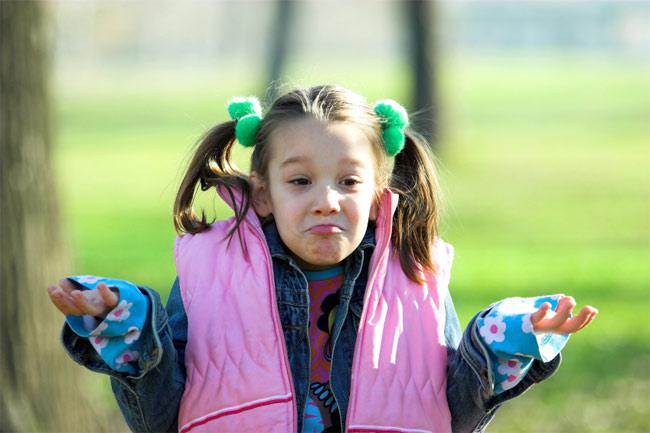Why Kids Ask Why

A child's never-ending "why's" aren't meant to exasperate parents, scientists say. Rather, the kiddy queries are genuine attempts at getting at the truth, and tots respond better to some answers than others.
This new finding, based on a two-part study involving children ages 2 to 5, also suggests they are much more active about their knowledge-gathering than previously thought.
"Even from really early on when they start asking these how and why questions, they are asking them in order to get explanations," lead researcher Brandy Frazier of the University of Michigan told LiveScience.
When explanations came their way, the little ones probed further, they found. "Kids are playing more of an active role in learning about the world around them than we may have expected," Frazier said.
The new findings, which are detailed in the November/December issue of the journal Child Development, can't be generalized to all children since the sample sizes were small.
Curious chatter
Past research from the early to mid 1900s on child development had suggested that young children were only aware of temporal relationships between two events and couldn't differentiate cause from effect until about 7 or 8 years of age. More recent work has suggested otherwise, that as early as age 3 children get causality.
Get the world’s most fascinating discoveries delivered straight to your inbox.
Lacking from such studies are kids' reactions to the information they get to their causal questions.
To figure out kids' responses to different questions, Frazier and her colleagues examined transcripts from everyday conversations of six kids, ages 2 to 4, who were speaking with parents, siblings and visitors at home. With just six kids, the researchers analyzed the transcripts, more than 580 of them, as their unit of analysis. Overall, there were more than 3,100 causal how and why questions such as, "Why my tummy so big, mom?" "Why not keep a light on?" and "How can snakes hear if they don't have ears?"
Results showed kids were more than twice as likely to re-ask their question after a non-explanation compared with a real answer. And when they did get an explanation, which was about 37 percent of the time, they were more than four times as likely to reply with a follow-up inquiry as if they had received a non-explanatory response.
Preliminary results from a separate new study of Frazier's suggest there is such a thing as too much information in a response. "It seems like kids might have an optimal level of detail they're interested in," Frazier said.
Odd items
The next part of the new study was lab-based and involved 42 preschoolers, ages 3 to 5, who chatted when prompted with toys, storybooks and videos. The items were designed to create surprising, question-provoking situations. For instance, kids were shown a box of all-red crayons, a puzzle with a piece that didn't fit, and a storybook describing a child who poured orange juice on his cereal.
The adults who showed kids each item had certain explanatory and non-explanatory responses. So as expected, kids asked about the orange-juice scenario: "Why did he do that?" The adult would then respond with the explanation, "He thought it was milk in the pitcher," or the non-explanation, "I like to put milk on my cereal."
They found significant differences in types of reactions to the explanatory answers versus the non-explanatory ones. Nearly 30 percent of the time kids would agree, nod or say "oh" after getting a true explanation, compared with just under 13 percent of the time for non-explanations.
For such non-answers, more than 20 percent of the time kids re-asked the original question. Just 1 percent of kids receiving an explanation did the same.
The newly published study was funded, in part, by the National Science Foundation and the Eunice Kennedy Shriver National Institute of Child Health and Human Development.
- Video – Attention Training For Kids
- 10 Things You Didn't Know About You
- Children News & Information
Jeanna Bryner is managing editor of Scientific American. Previously she was editor in chief of Live Science and, prior to that, an editor at Scholastic's Science World magazine. Bryner has an English degree from Salisbury University, a master's degree in biogeochemistry and environmental sciences from the University of Maryland and a graduate science journalism degree from New York University. She has worked as a biologist in Florida, where she monitored wetlands and did field surveys for endangered species, including the gorgeous Florida Scrub Jay. She also received an ocean sciences journalism fellowship from the Woods Hole Oceanographic Institution. She is a firm believer that science is for everyone and that just about everything can be viewed through the lens of science.


